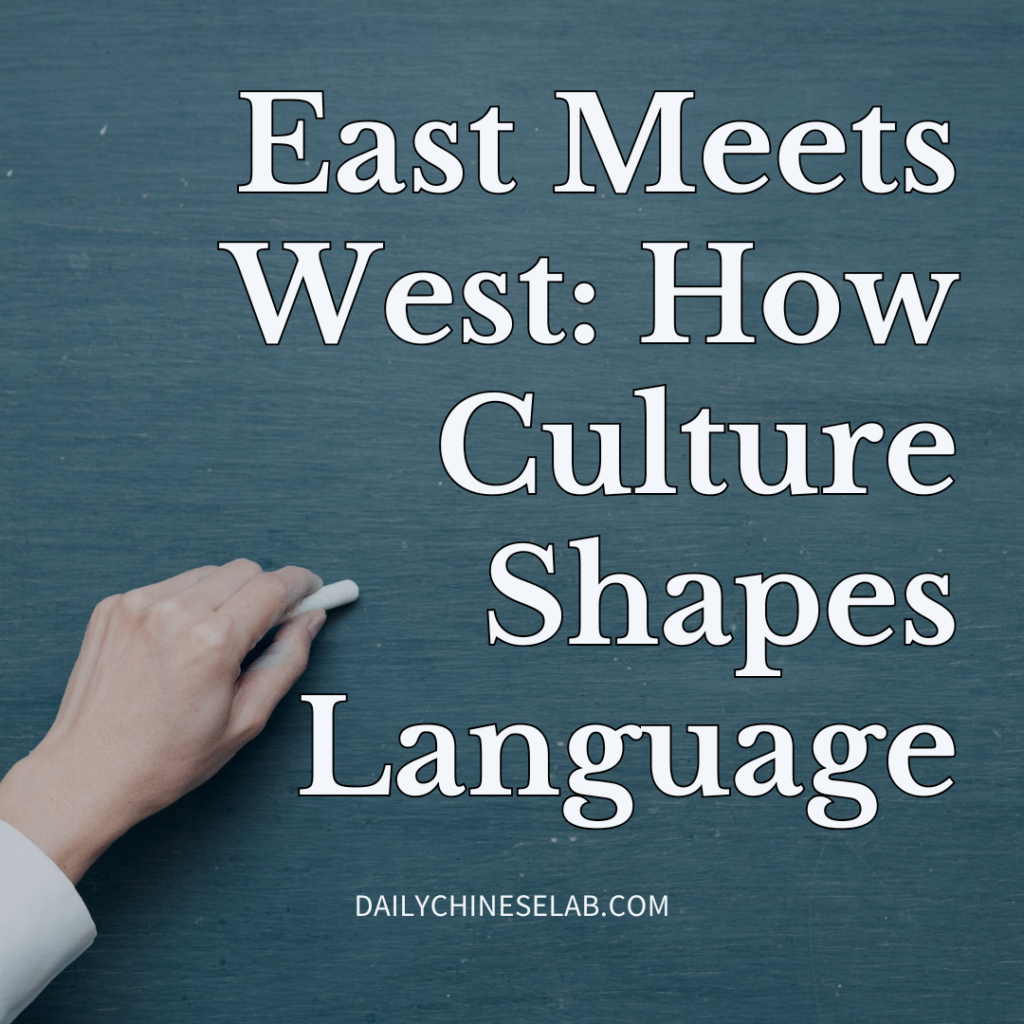Language is more than just a means of communication; it is a reflection of a culture’s history, values, and worldview. The differences between Chinese and Western cultures have had a profound impact on the development of their respective languages. In this article, we will explore some of the key ways in which cultural differences have shaped the languages of the East and the West.
Concept of Self
- Individualism vs. Collectivism: Western cultures tend to emphasize individualism, while Eastern cultures, such as Chinese culture, prioritize collectivism. This difference is reflected in language, with Western languages often having more personal pronouns and a greater focus on individual achievements. In contrast, Chinese language often emphasizes social harmony and relationships.
- High-context vs. Low-context Cultures: Western cultures are generally considered to be low-context, meaning that information is explicitly stated. In contrast, Chinese culture is high-context, relying heavily on nonverbal cues and shared understanding. This difference is reflected in the way language is used, with Chinese often using more indirect language and leaving certain things unsaid.
Time Orientation
- Past, Present, and Future: Western cultures often have a linear view of time, focusing on the past, present, and future. Chinese culture, on the other hand, has a more cyclical view of time, emphasizing the importance of history and tradition.
- Long-term vs. Short-term Orientation: Eastern cultures, such as Chinese culture, tend to have a long-term orientation, valuing patience, perseverance, and saving face. Western cultures, on the other hand, often have a short-term orientation, focusing on immediate results and efficiency.
Social Hierarchy
- Power Distance: Eastern cultures, like Chinese culture, often have a higher power distance, meaning that there is a greater acceptance of hierarchical relationships. This is reflected in language through the use of honorifics and different levels of formality.
- Directness vs. Indirectness: Western cultures tend to be more direct in their communication, while Eastern cultures often use more indirect language to avoid conflict or loss of face.
Language Structure
- Grammar and Syntax: The grammatical structures of Chinese and Western languages differ significantly, reflecting the different ways in which people in these cultures think and perceive the world.
- Writing Systems: The Chinese writing system is logographic, meaning that each character represents a word or idea. Western writing systems, such as the Roman alphabet, are phonetic, with each letter representing a sound.
If you have any questions, feel free to use our free community to ask questions.
Conclusion
The differences between Chinese and Western cultures have had a profound impact on the development of their respective languages. By understanding these cultural differences, we can gain a deeper appreciation for the richness and diversity of human language.
We’re always here for you on Facebook.
Receive exclusive news and deals on Daily Chinese Lab’s Facebook.









